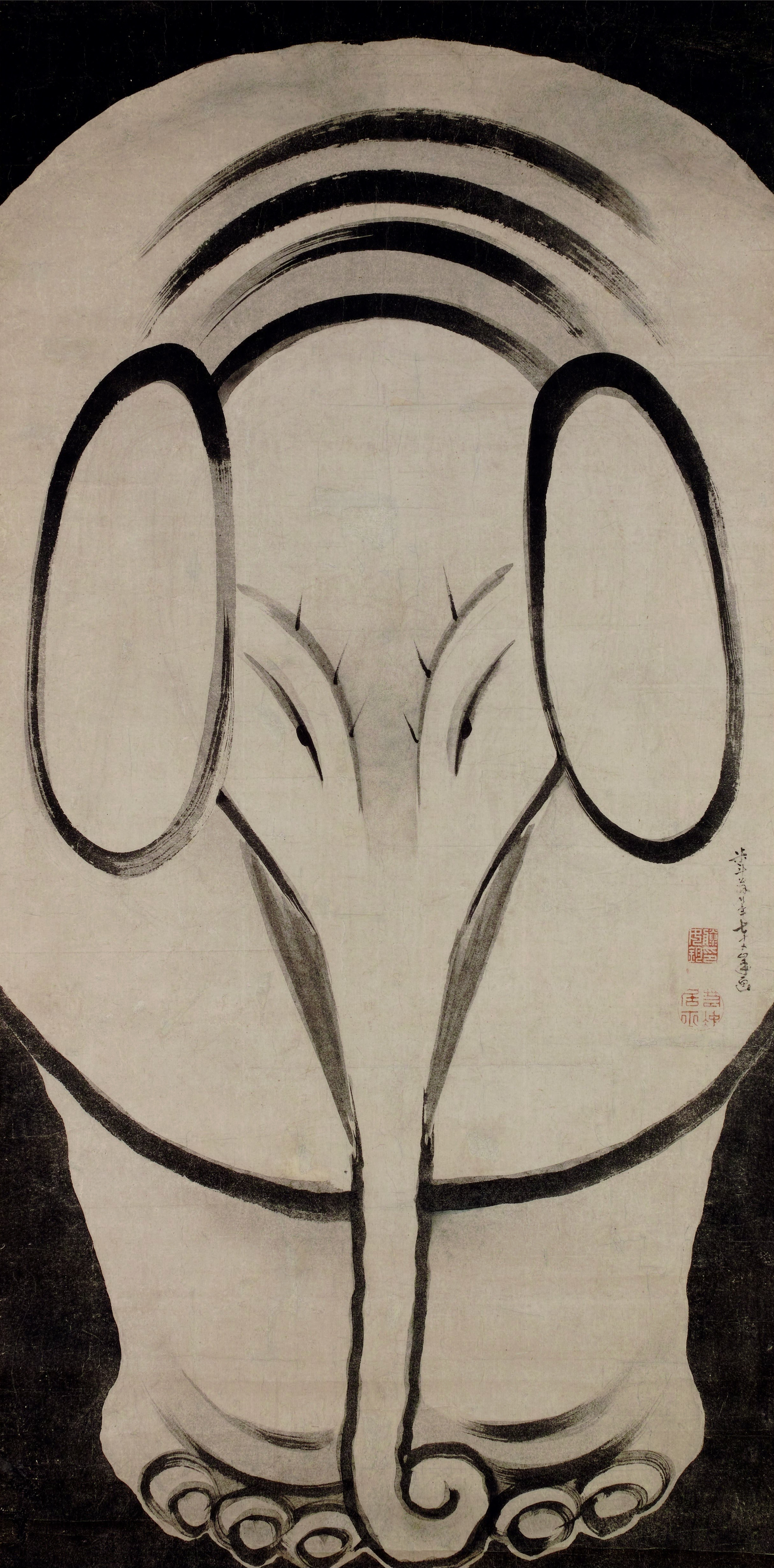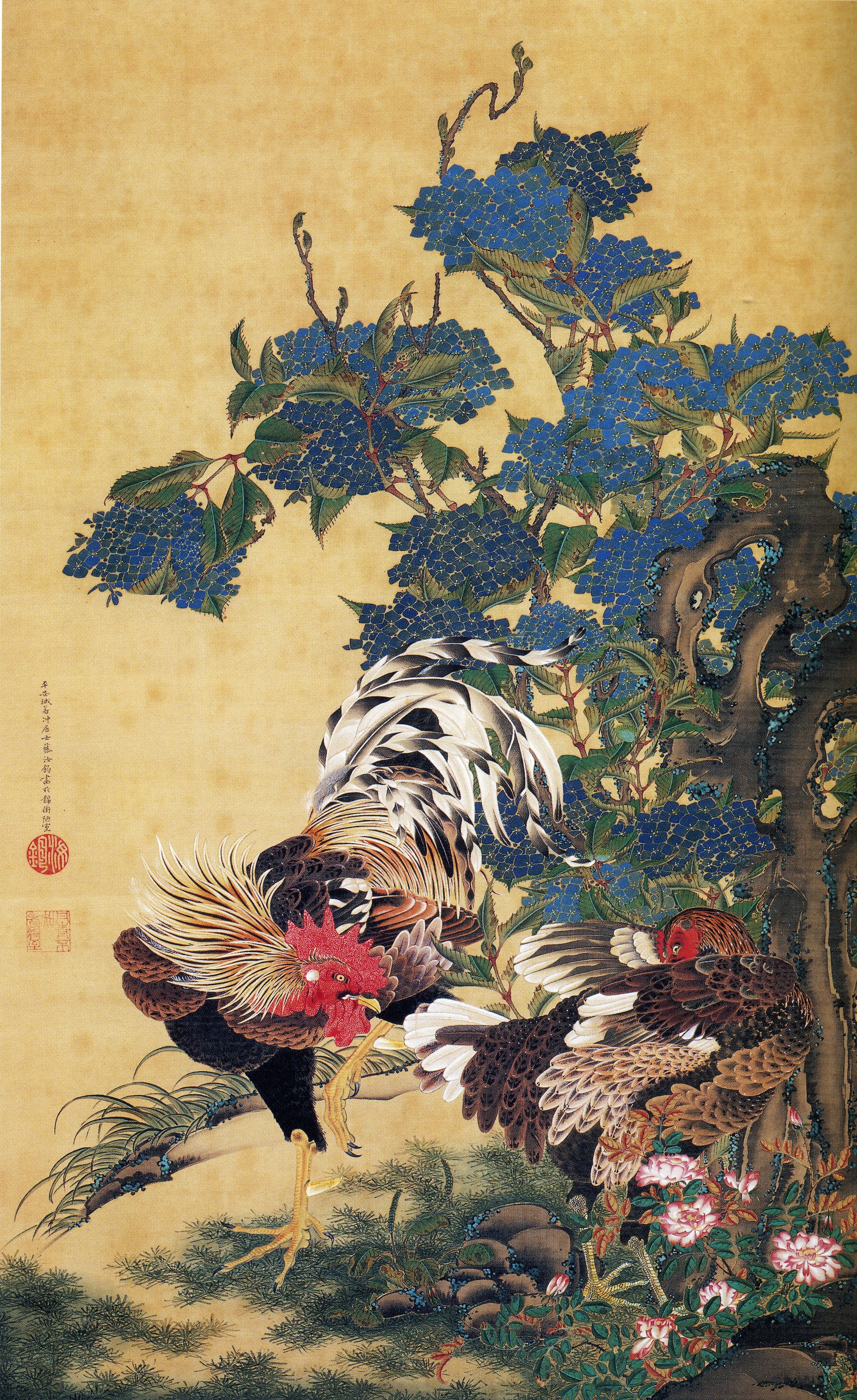Itō Jakuchū was a Japanese painter of the mid-Edo period when Japan had closed its doors to the outside world. Many of his paintings concern traditionally Japanese subjects, particularly chickens and other birds. But here we have something else!
An elephant, painted from the front, fills the entire frame. It is a bold composition that gives the long, narrow surface a surprising and unexpected twist. The method of filling in the background with ink to make the elephant stand out without adding color is effective; it is speculated that the effects of taku-hanga (“rubbing prints”) were applied to the hand-painted work. The style may look simple, but its meticulous and thoughtful use of light and dark ink can be seen. Points such as the expression of the back with just three curved lines are abstract and fascinating.
From the signature and seal, we learn that the piece was made in Jakuchū’s studio in the second half of 18th century. In 1728, an actual elephant was brought to Japan at the behest of the eighth shogun, Tokugawa Yoshimune. It is said that the following year, it was walked from Nagasaki to Edo. It is possible that 14-year-old Jakuchū saw the elephant himself in Kyoto. In this piece, the memory of the elephant, just as he may have seen it, is painted with such impact that it would seem to jump out from the tatami-sized gasenshi (a type of paper used for ink painting and calligraphy).
Happy World Elephant Day; who would have known it is today!
P.S. Here is another elephant, this time in a church (and other curious stories of Venice).


 Itō Jakuchū
Itō Jakuchū